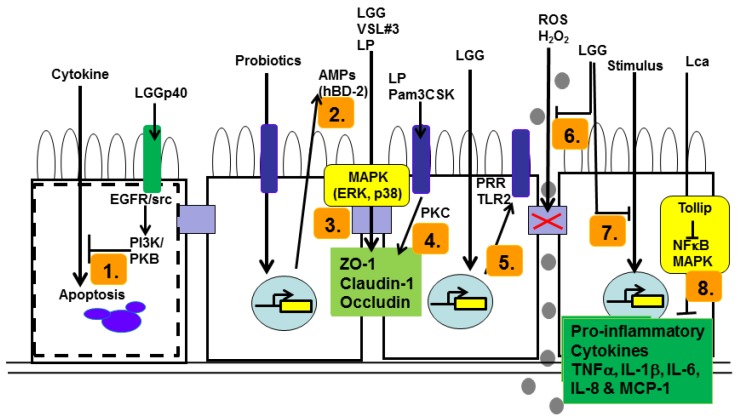Figure 1.
Probiotic modulation of intestinal epithelial cell signaling pathways Probiotic-mediated modulation of epithelial cell responses via activation or suppression of distinct signaling pathways is species-dependent. Mechanisms of modulation are presented above for a range of species of Bifidobacteria, Lactobacilli, Streptococcus, VSL#3 mixture and the yeast S. cerevisiae, indicated in the luminal space above the square epithelial cells; additionally, LGG, L. rhamnosus strain GG; LGGp40, LGG secreted p40 protein; LP, L. plantarum; Lca, L. casei. Mechanisms are indicated by numbers 1–8 in orange boxes: 1. Anti-apoptotic, 2. Antimicrobial defence, 3. Reinforcement of tight junction (TJ), 4. Reinforcement of TJ (gene expression & translocation to TJ), 5. Pathogen sensing, 6. Protection against TJ damage, 7. & 8. Suppression of inflammatory cytokines. Arrowed lines are activatory, blunted lines are suppressive/inbibitory. Light blue boxes between epithelial cells are representative of tight junctions. Dark blue boxes represent PRRs, predominantly TLR2. Dark green box on apical surface is an, as yet unidentified receptor for LGGp40. EGFR, Epithelial growth factor receptor; Src, serine-threonine kinase; ZO-1, zonula occludens-1; AMPs, antimicrobial peptides; TNFα, tumour necrosis factor-alpha; PRR, pattern recognition receptors; PKC, protein kinase C; PI3K, phosphatidyl inositol 3-kinase.

